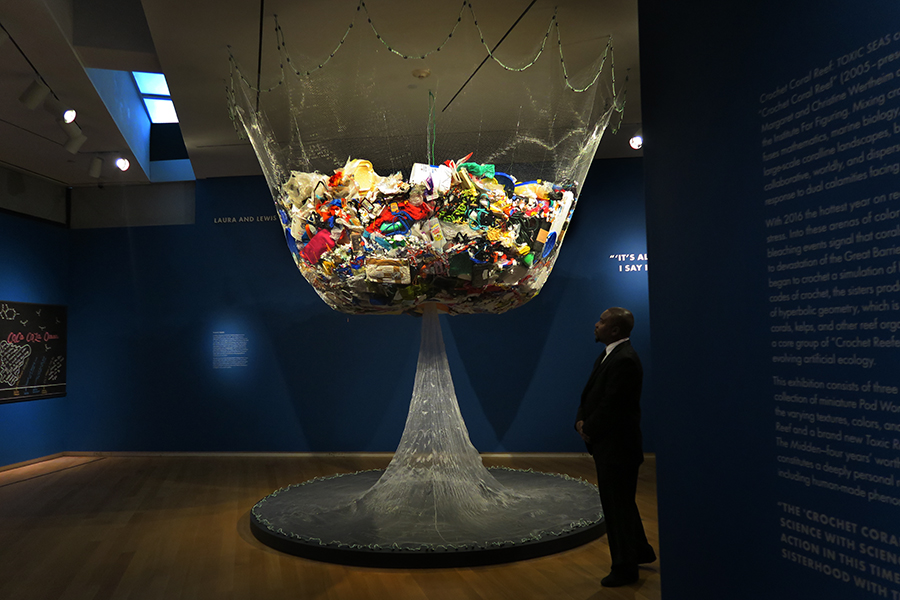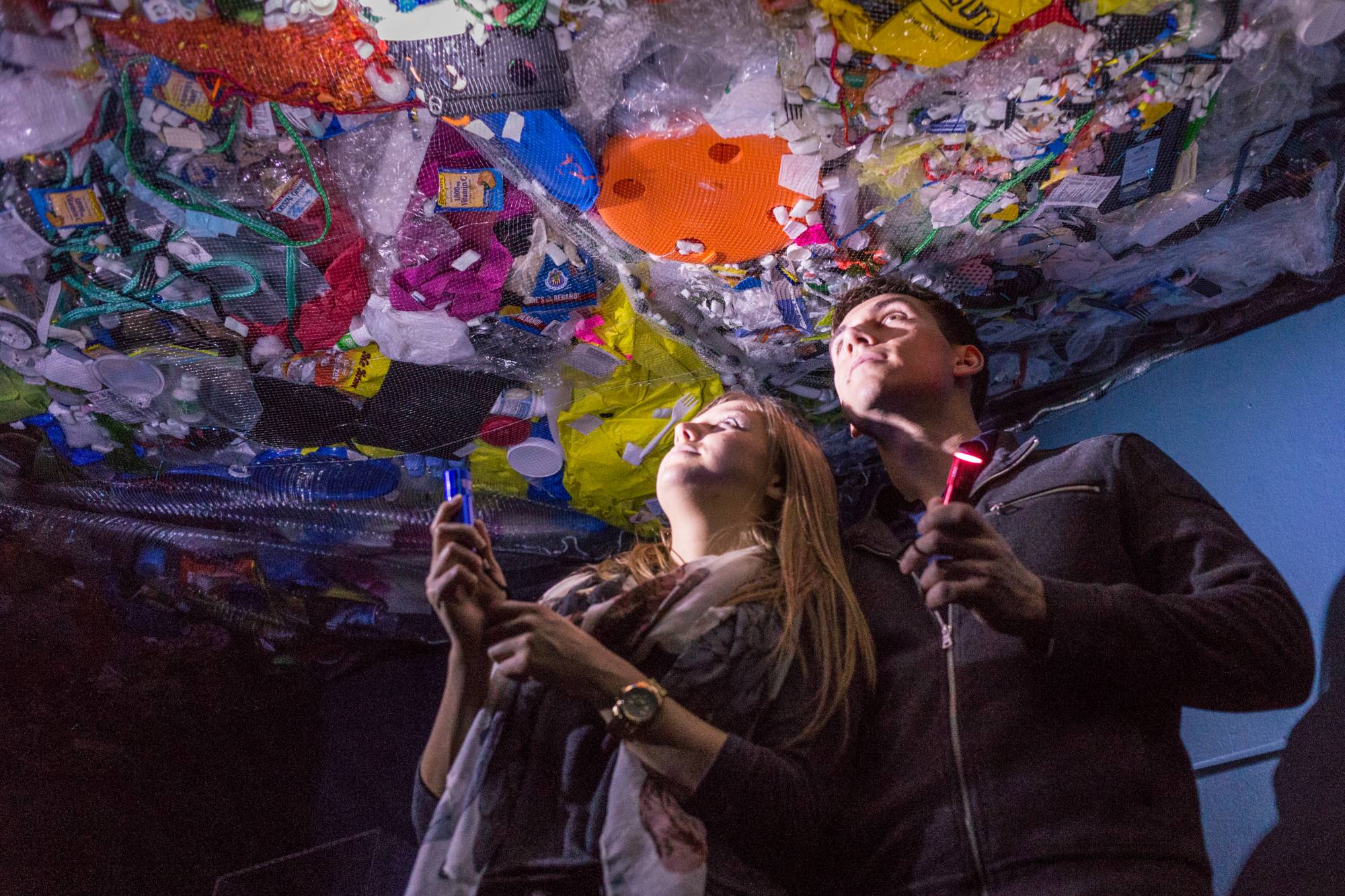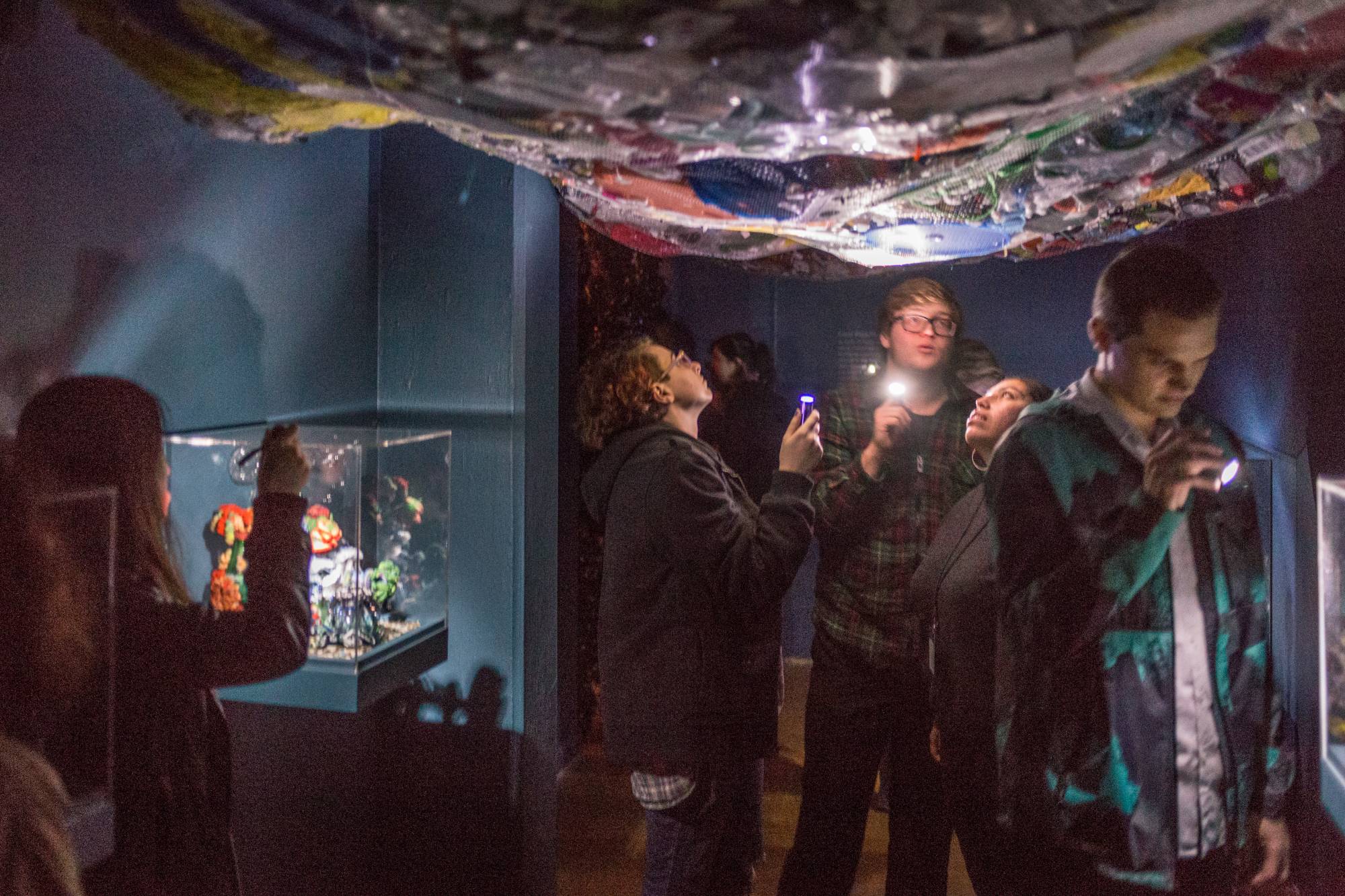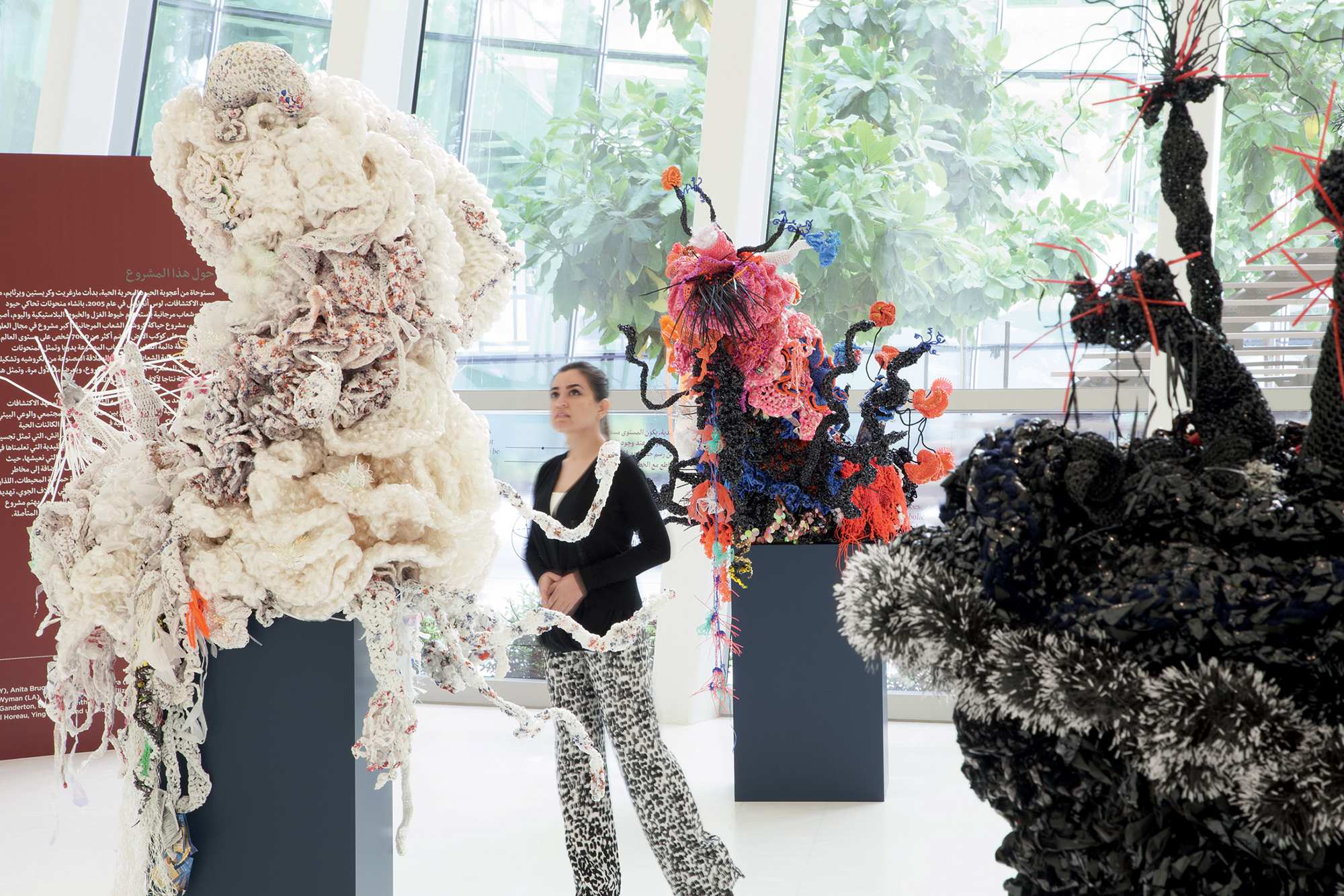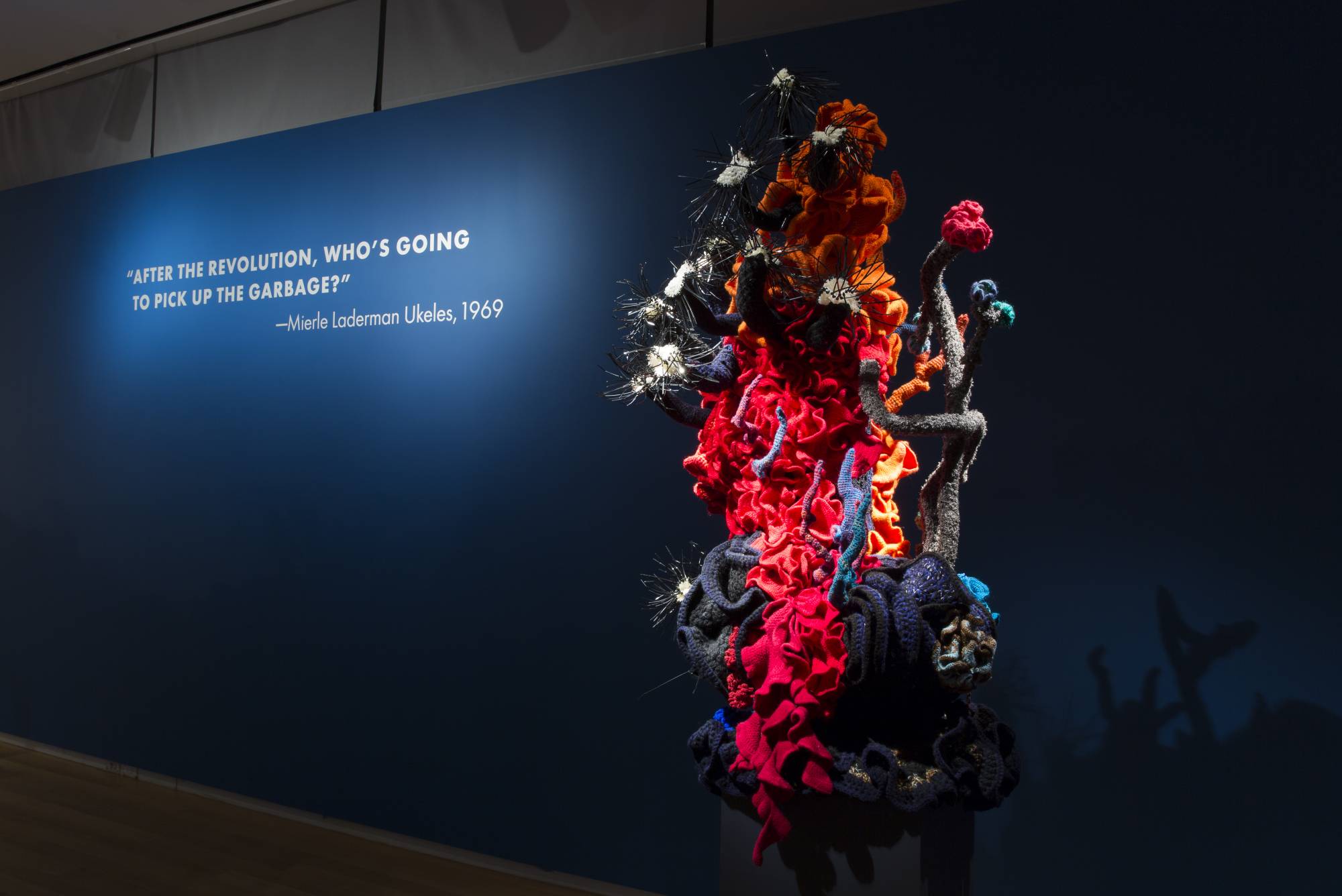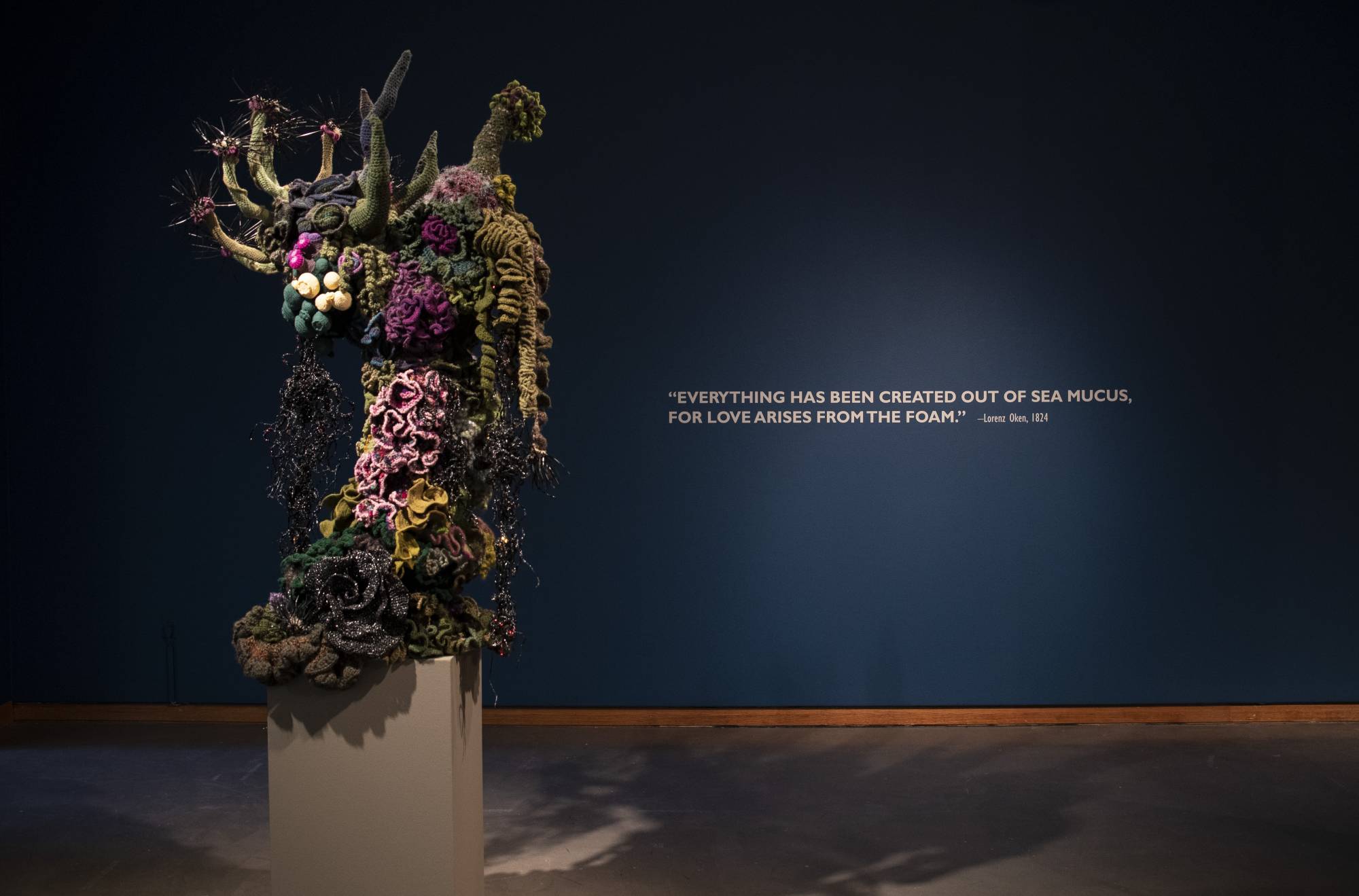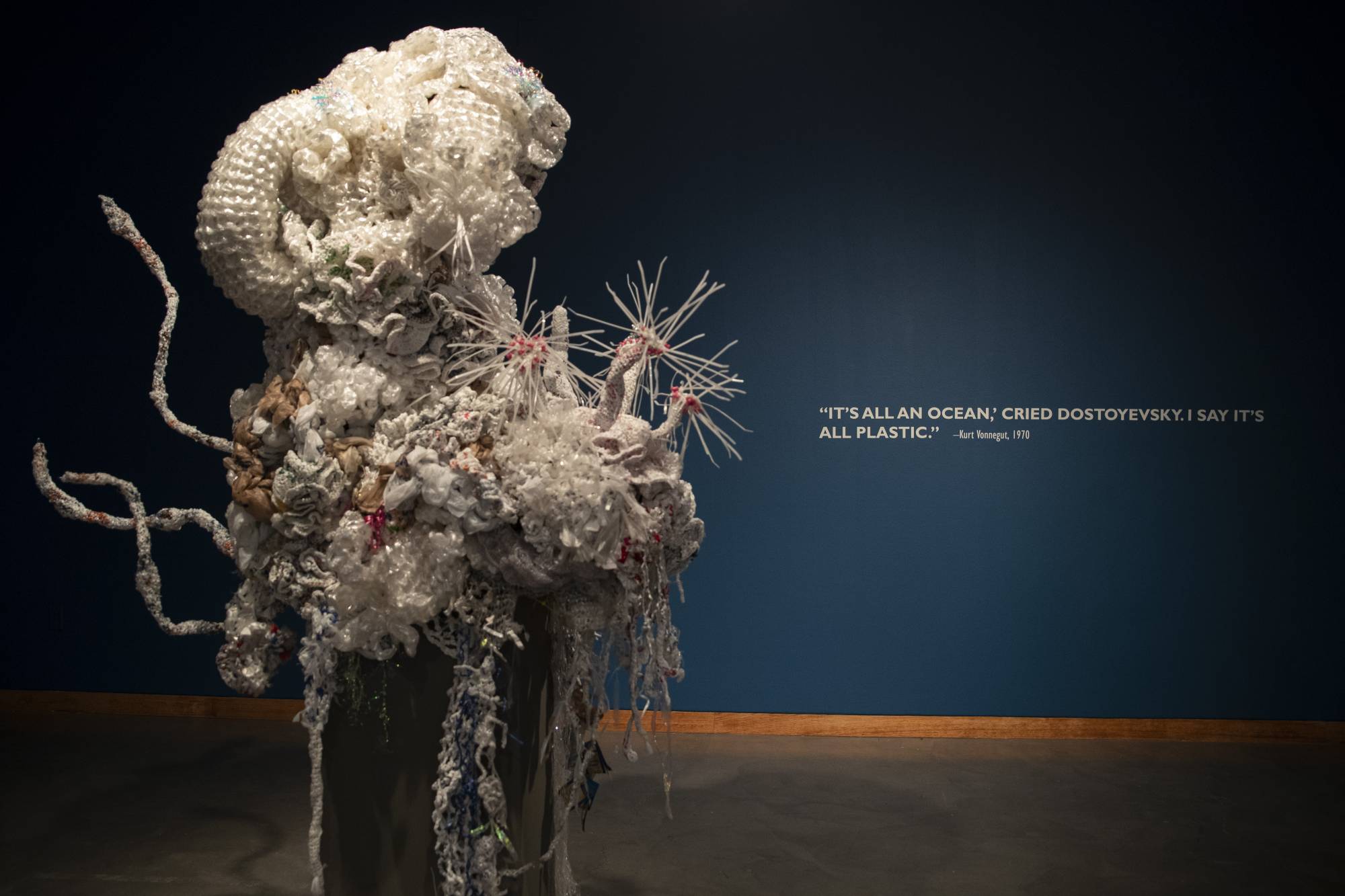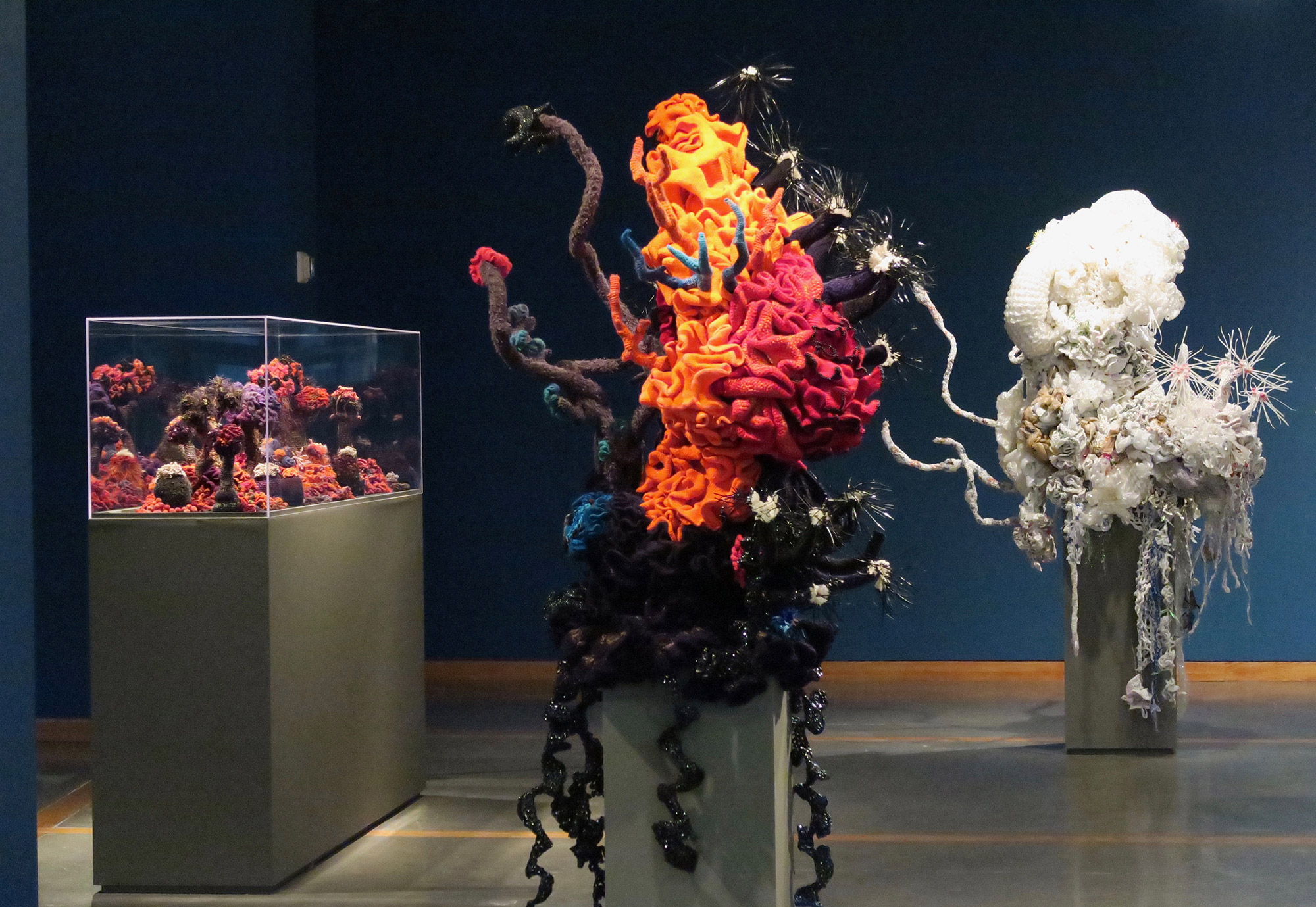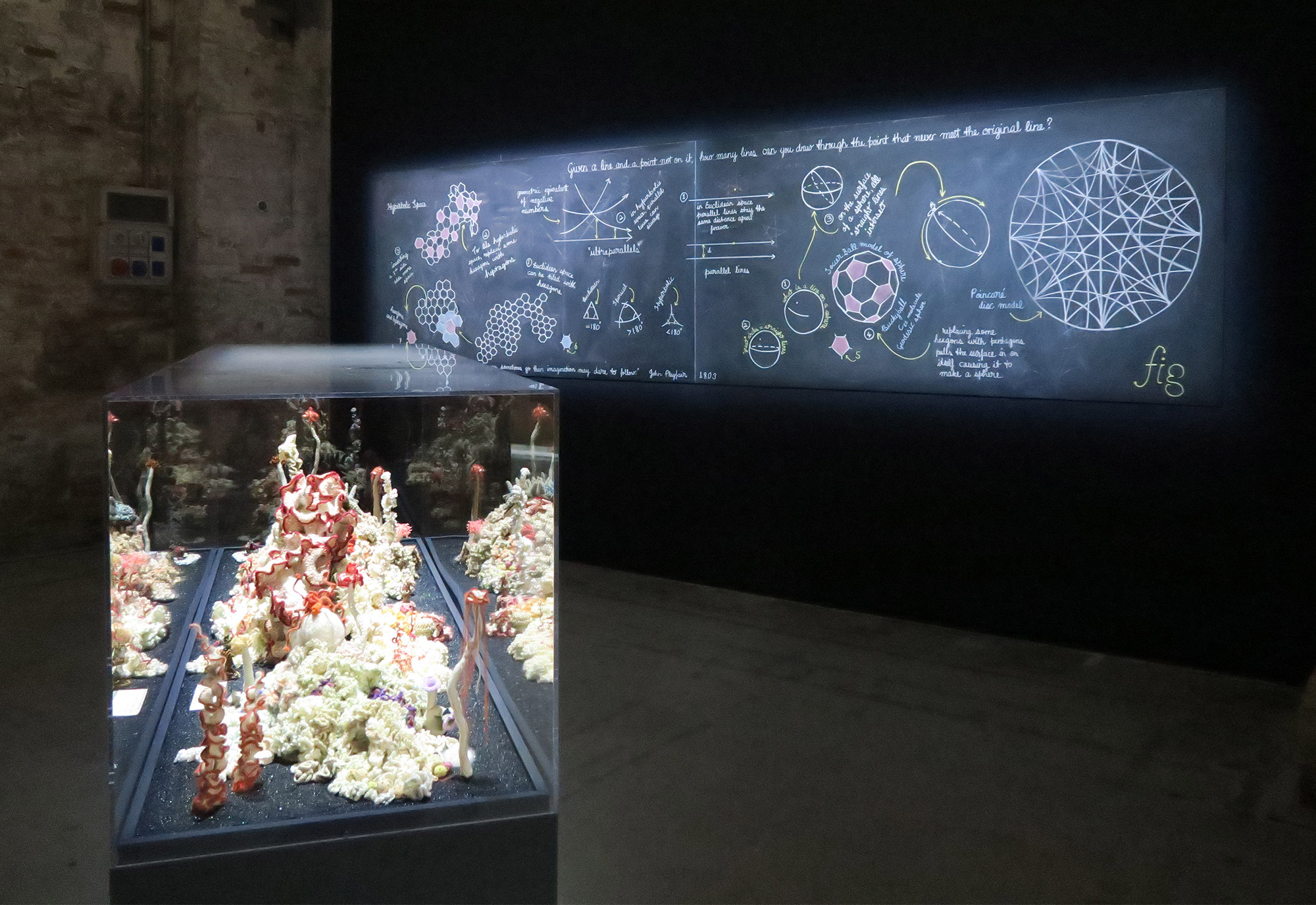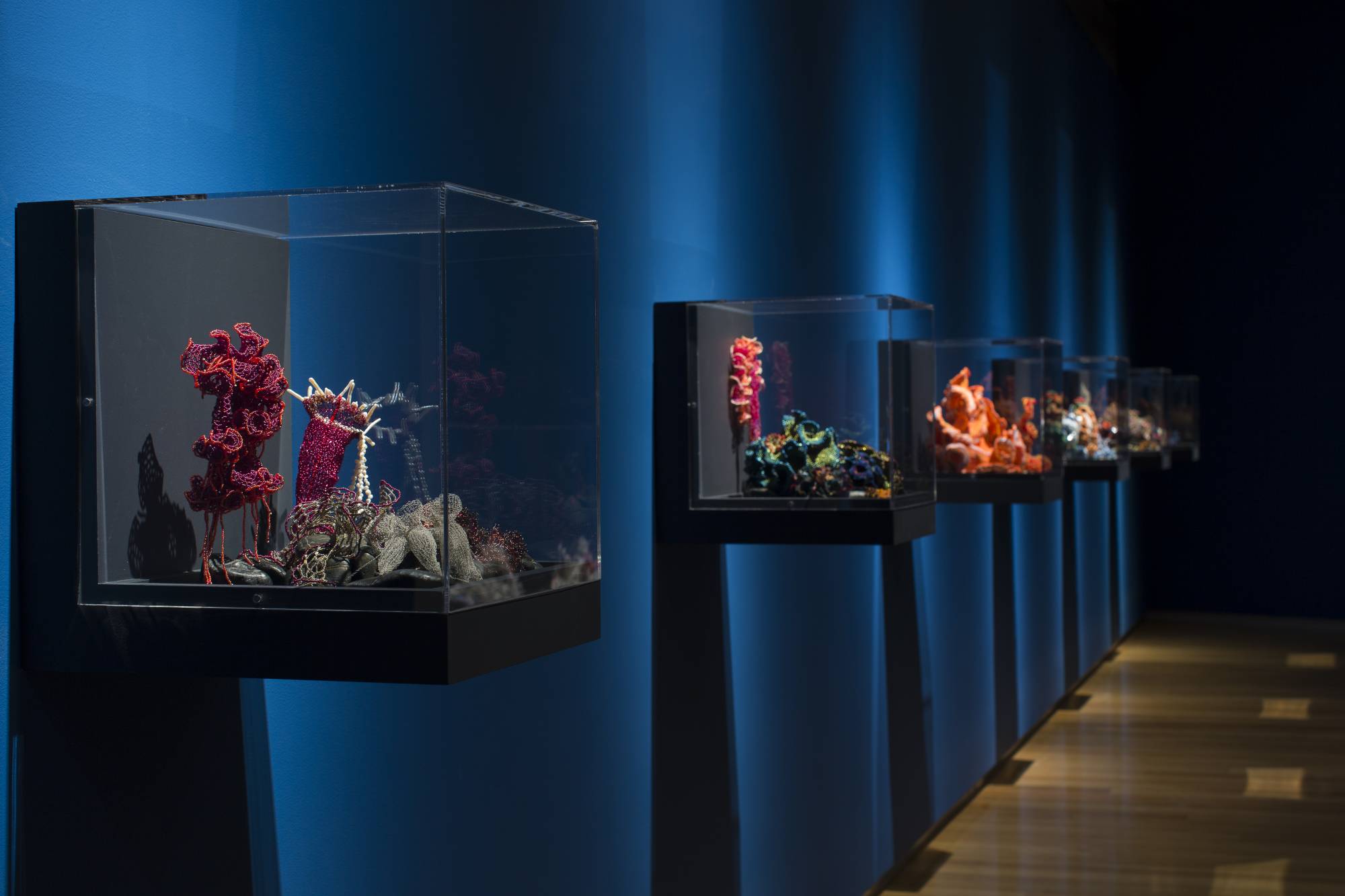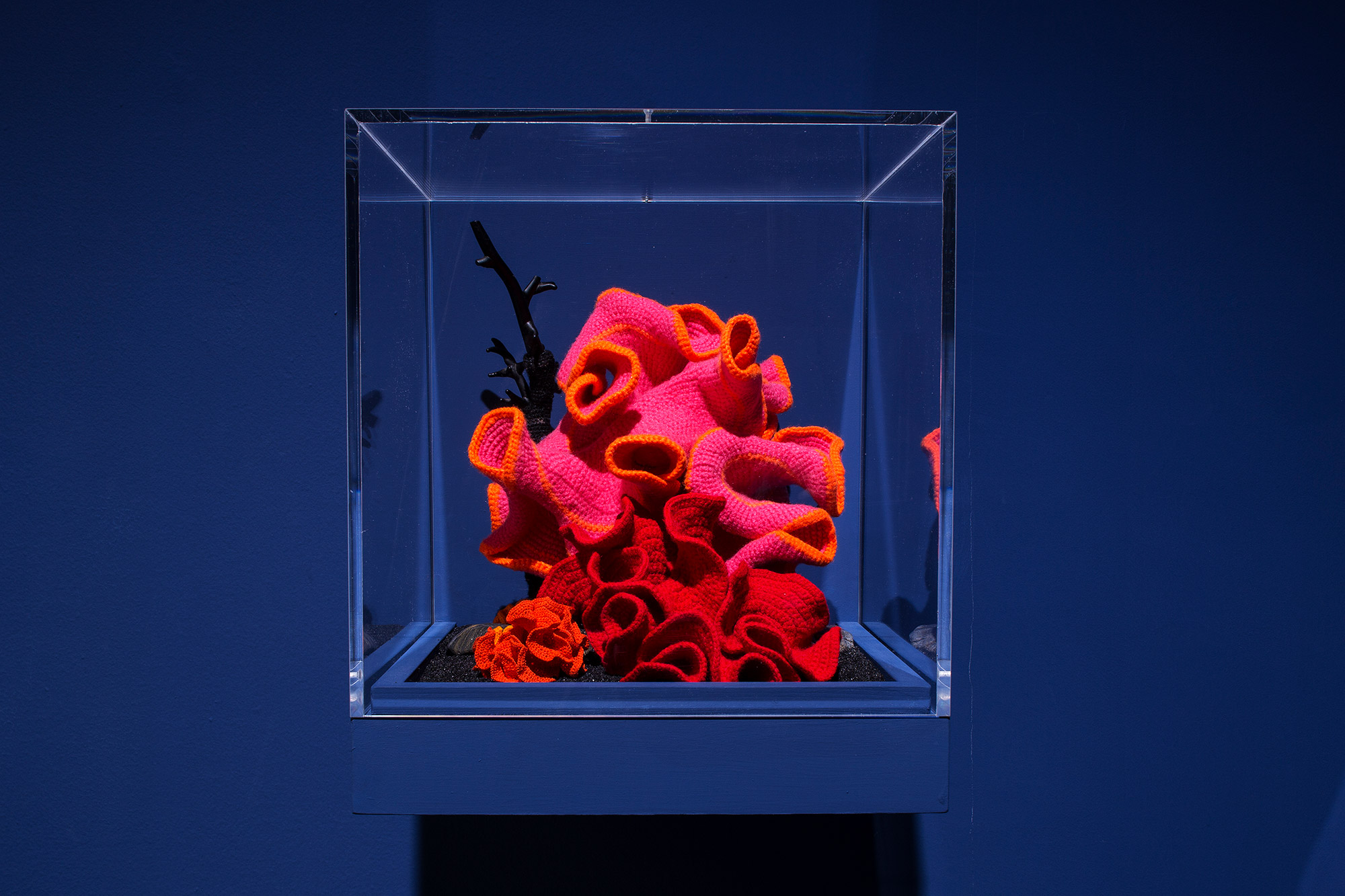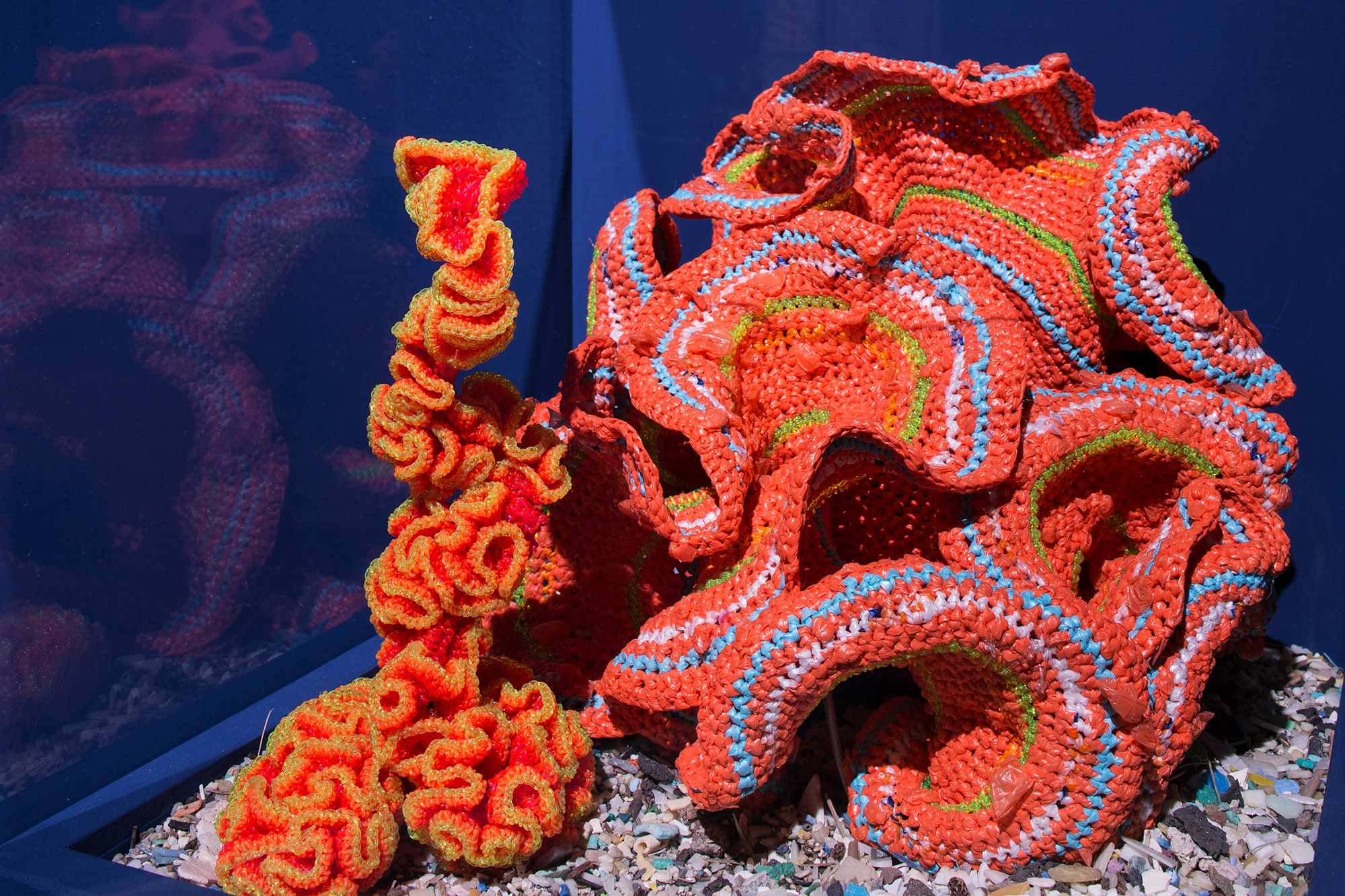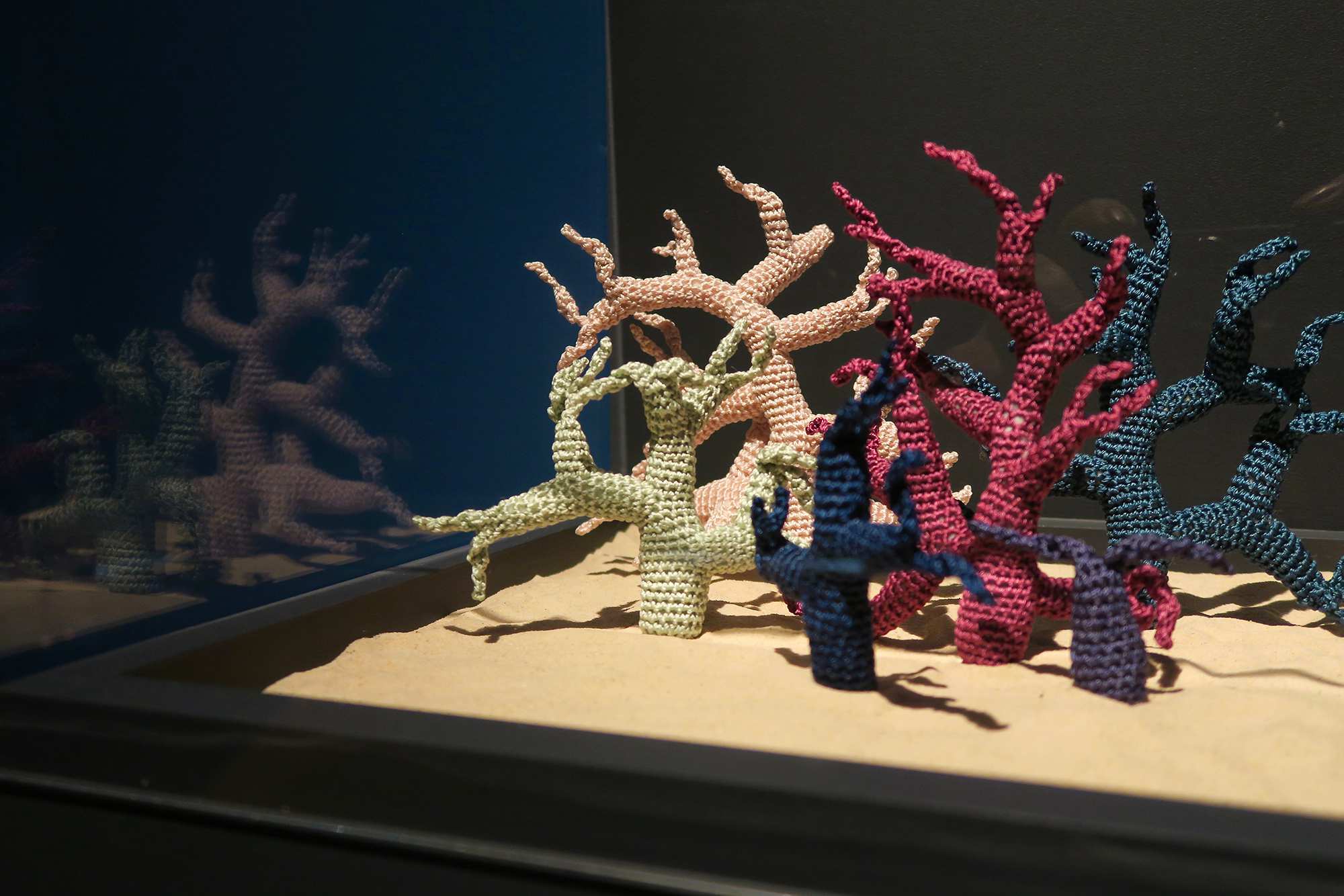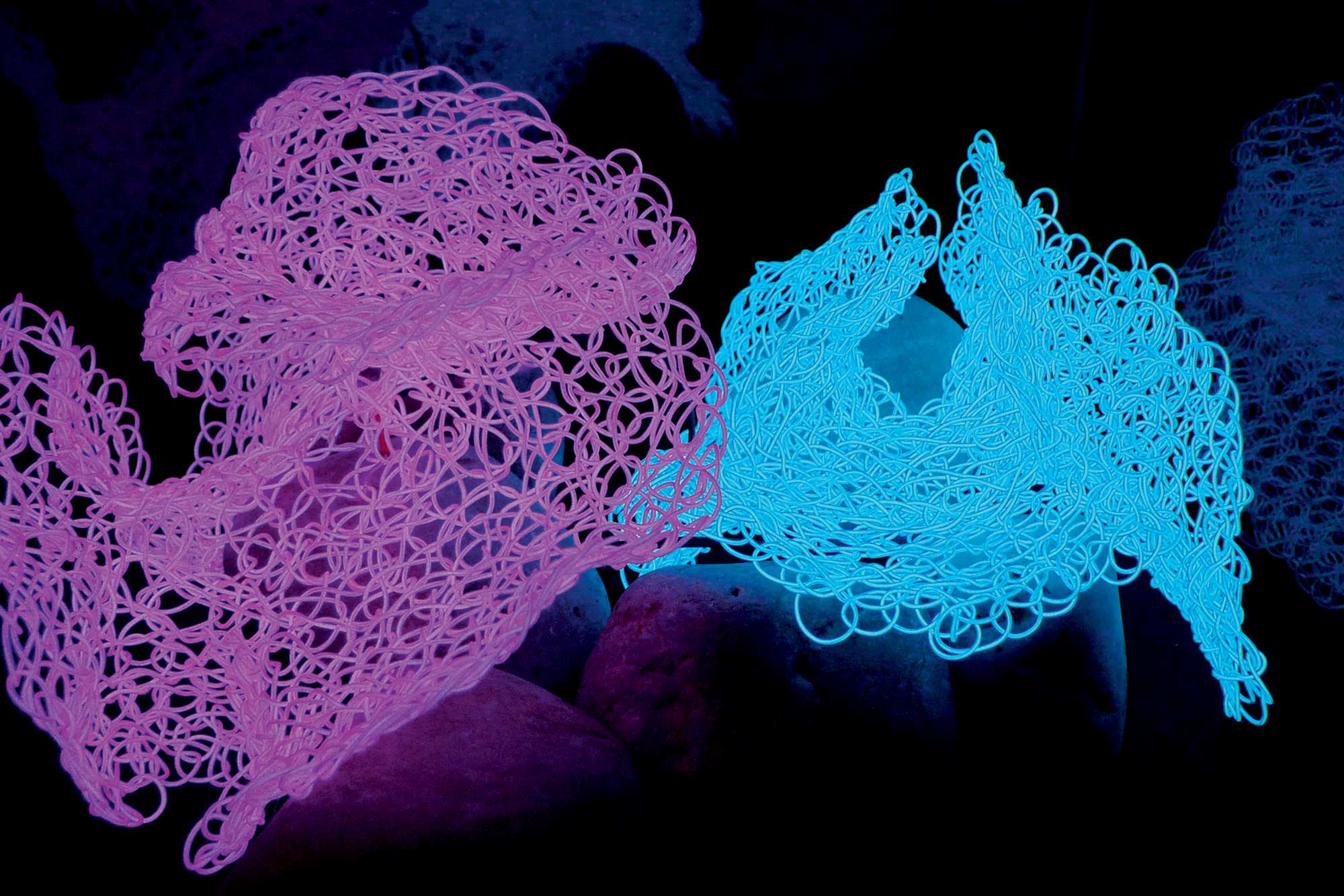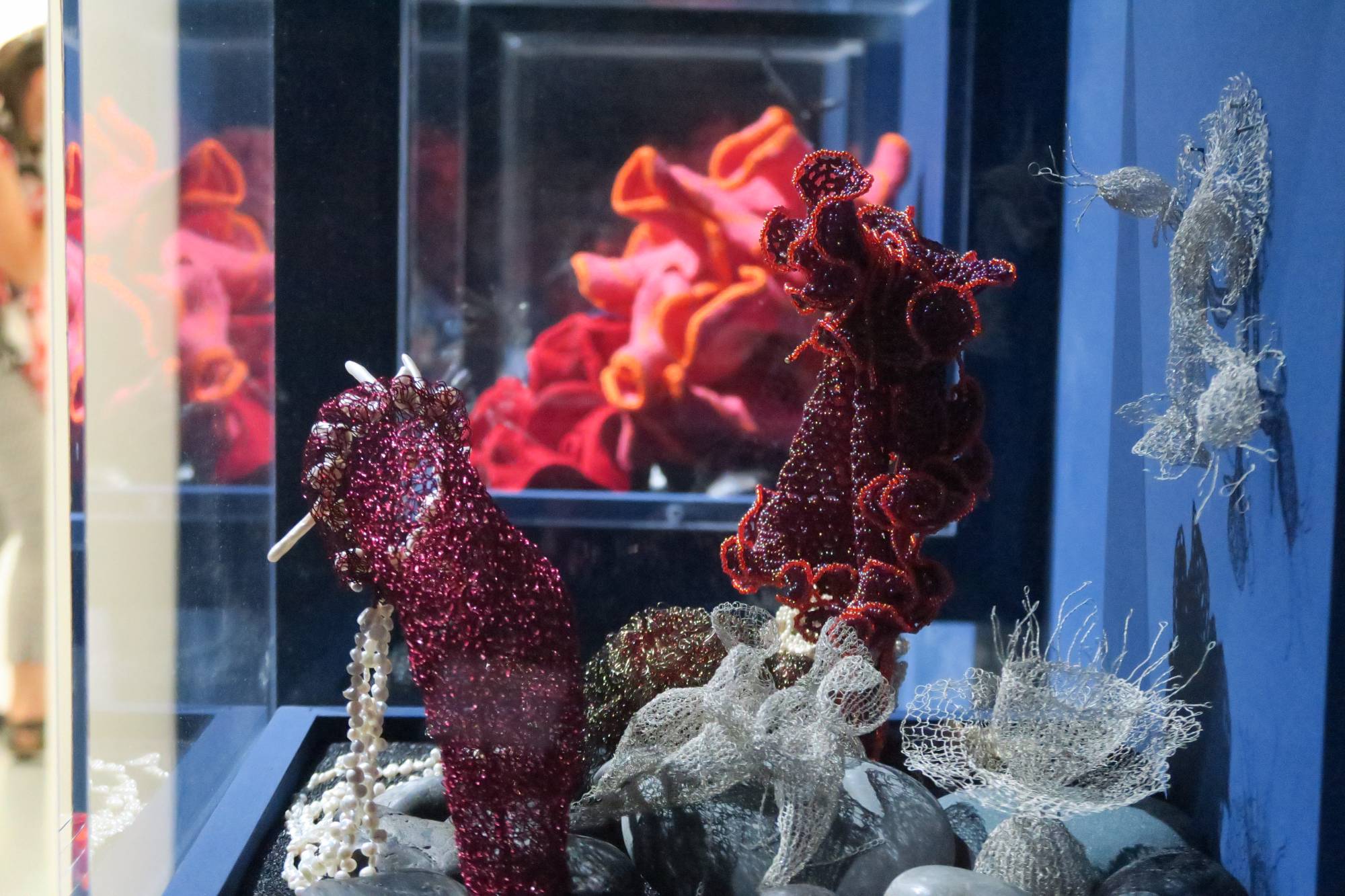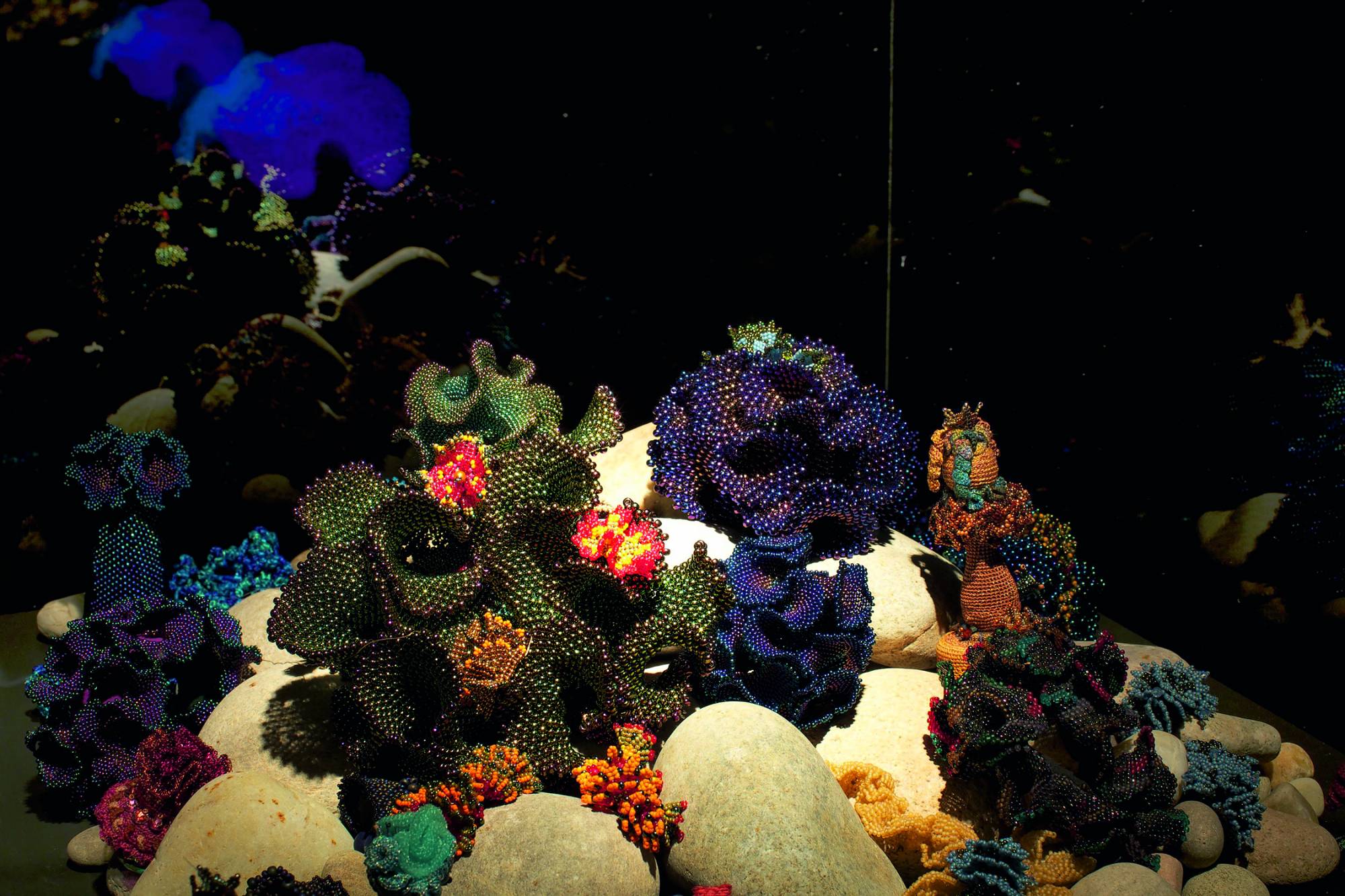The collection has been shown at more than 20 venues worldwide including the 2019 Venice Biennale, Andy Warhol Museum (Pittsburgh), Hayward Gallery (London), Science Gallery (Dublin), Museum of Arts and Design (New York), and the Smithsonian’s National Museum of Natural History (Washington D.C.) The works in this suite are made by Christine Wertheim and Margaret Wertheim, who design and fabricate the sculptures and who jointly crochet most of the individual pieces. Incorporated into the sculptures are also individual pieces from a select group of “Core Contributors” to the project. A list of these innovative crafters can be found here on the Artists page.
Traveling Exhibition
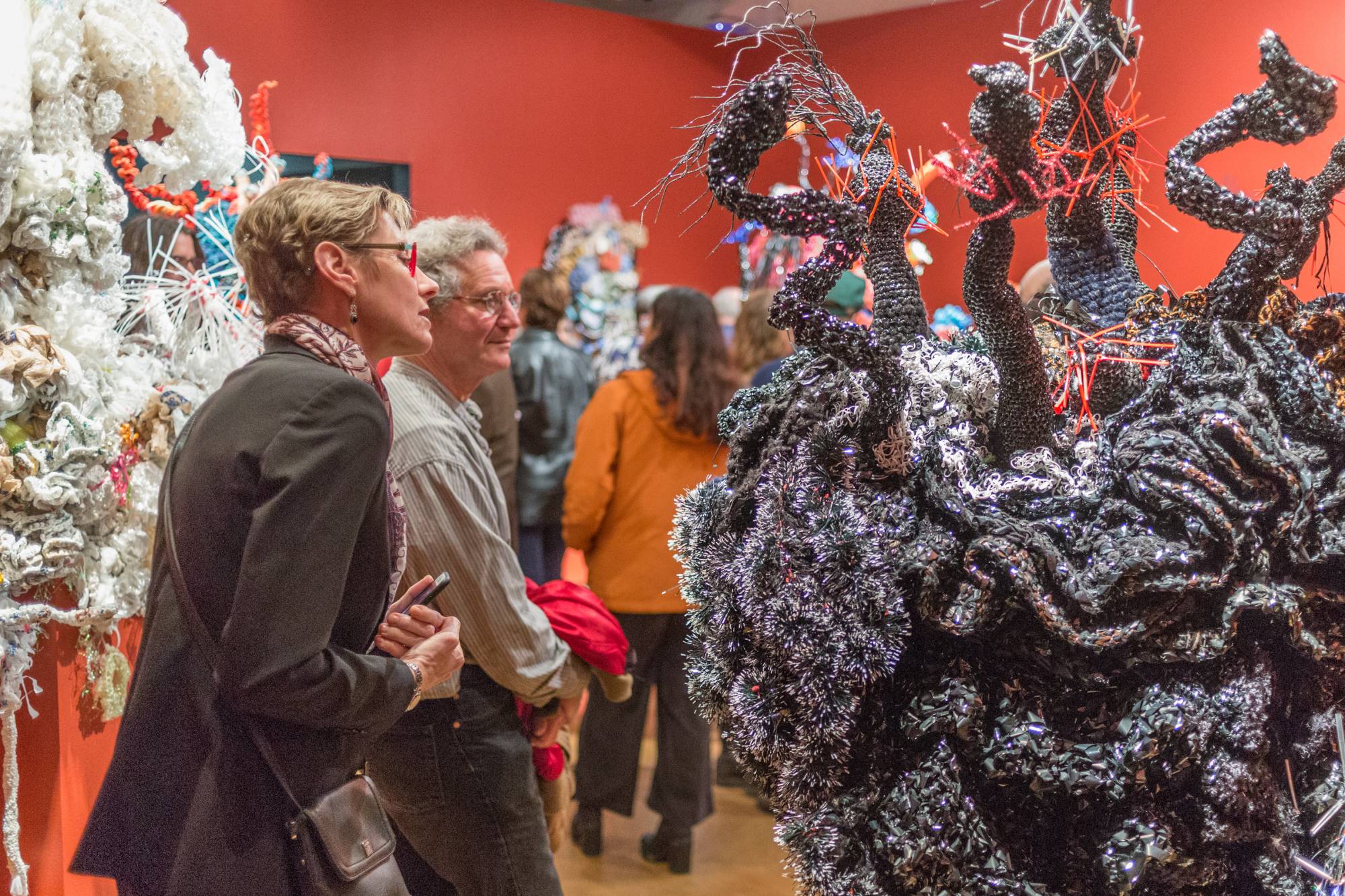
Coral Forest – plastics
Photo courtesy of Institute for Arts and Sciences, UC Santa Cruz.The “Core Collection” of the Crochet Coral Reef project is a suite of sculptures that travels to museums and galleries around the world.

The Core Collection
The Core Collection consists of the following sculptures:
- Coral Forest (six large pedestaled works)
- Bleached Reef (large vitrined work)
- Toxic Reef (large vitrined work)
- Branched Anemone Garden (large vitrined work)
- Pod Worlds (12 small vitrined works of miniature corals)
- Hanging Works (three pieces)
Two additional works are available when space and resources permit:
- Mathematics Blackboard (a large chalkboard drawing created on-site)
- The Midden (a large hanging work)
The Traveling Exhibition of the Core Collection is available for loan to museums and galleries, either in whole or in part. If your institution would like to consider a show of the work please see our guidelines here: Exhibiting the Crochet Reef.
Coral Forest
A set of 6 large totemic sculptures, standing on pedestals. Three of the Coral Forests are crocheted from yarn, and three from plastic. Where the yarn works reference the organic beauty of nature, the plastic pieces refer to our petro-chemical age and the post-modern present of synthetics. Coral Forest can be shown with the entire Traveling Exhibition, or as a stand-alone suite. Coral Forest – Stheno is loaned from the collection of Jorian Polis Schutz.
Bleached Reef and Toxic Reef
The Bleached Reef is an invocation of coral “bleaching,” the phenomena living reefs undergo in response to stresses such as pollution and warming waters. In exhibition settings, the Bleached Reef is usually paired as a diptych with the Toxic Reef, a black and white tableau crocheted from yarn, plastic, and video tape. Both works are displayed on vitrined pedestals. [Pedastal Dimensions: W 94 inches x D 30 inches x H 20 inches; Vitrine Dimensions: W 94 inches x D 30 inches x H 30 inches.] See here and here for more information about these pieces.
Branched Anemone Garden
A large vitrined work, Branched Anemone Garden is the first reef the Wertheim sisters crocheted. During its life, the piece has undergone various “evolutionary” phases leading to its current incarnation, which is presented in-the-round. The work was inspired by the Great Barrier Reef and by the orange-and-red color palette of the Hamilton Ranges in Central Australia. [Pedestal Dimensions: W 94 inches x D 22 inches x H 45 inches. Vitrine Dimensions: W 94 inches x D 22 inches x H 24 inches.] This work is loaned from the collection of Lisa Yun Lee.
Pod Worlds
A series of small vitrined Pod Worlds, each invoking a miniature coral universe. These works contain complex and delicate pieces by some of the Crochet Coral Reef project’s most skilled and beloved crafters. Some of the Pods are all crocheted in yarn; others are made from beaded pieces resembling small Byzantine gems. Several are made from plastic, and these works sit on a bed of “plastic sand” harvested from the Great Pacific Garbage Patch. Two Pods are crocheted from electroluminescent wire, designed for military applications such as lighting the insides of tanks. There are 13 Pod Worlds in all, and exhibitions may include all, or a fewer number, depending on available space. [Dimensions: Each Pod World vitrine is 15 inches x 15 inches x 15 inches. Each work rests on a wooden base mounted on a wall.]
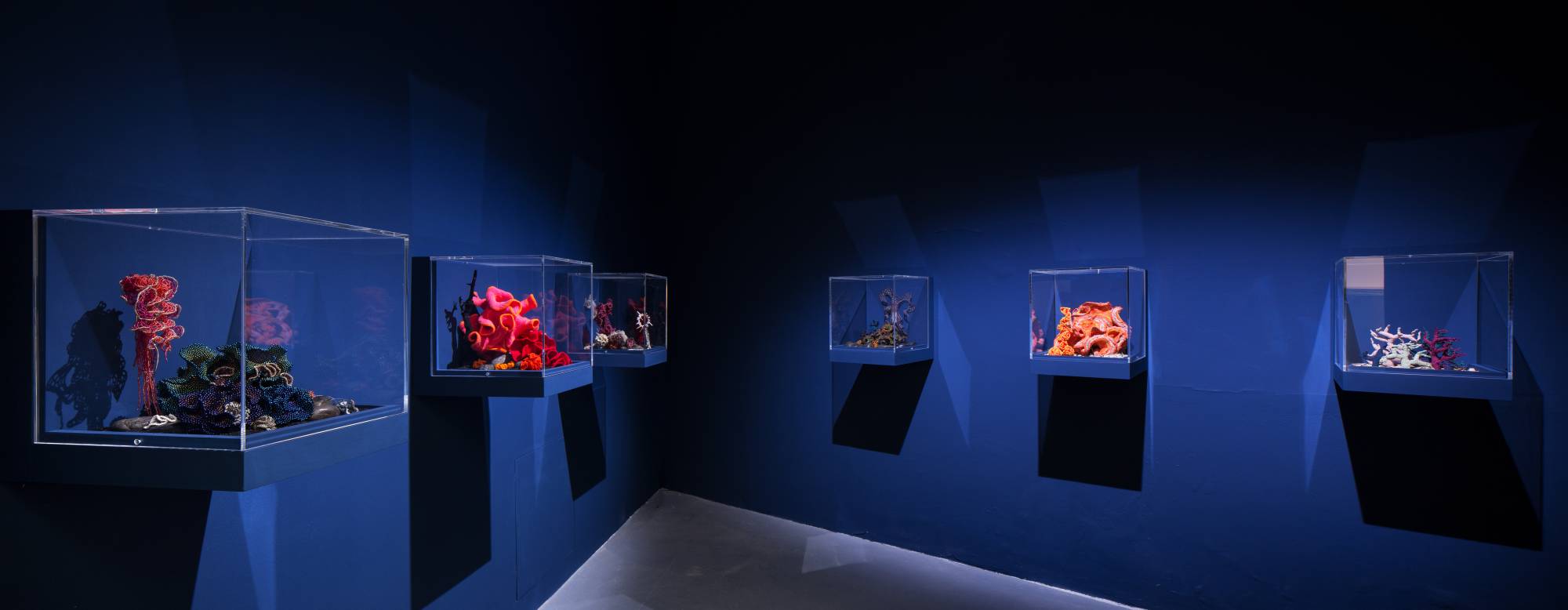
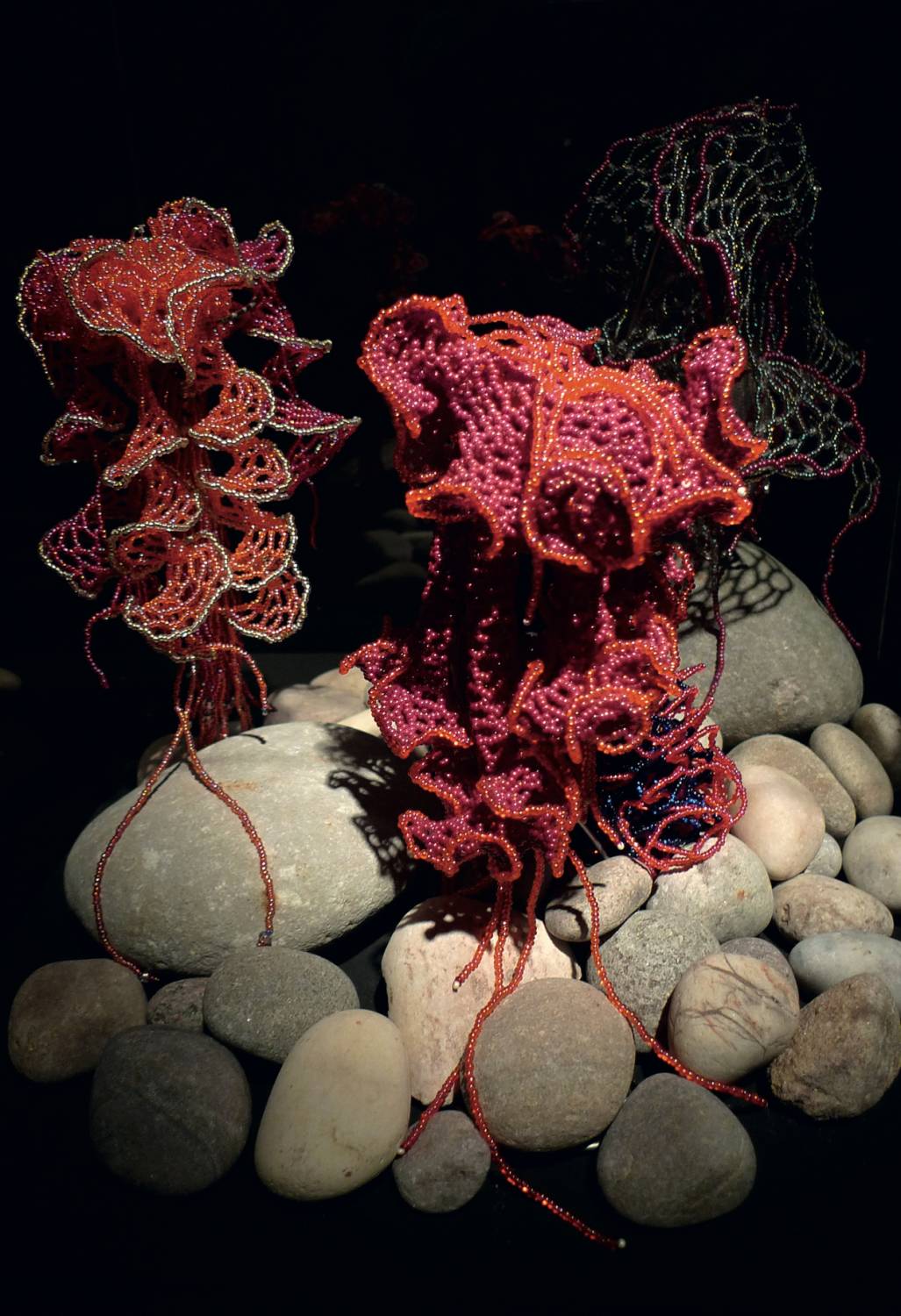

Hanging Works
The Traveling Exhibition includes 3 hanging works. There are two pieces that hang on the walls: a section of the Latvian Satellite Reef, which brings the community-making aspect of the project into the show; and the Carnation Mound, a work inspired by an actual coral species, crocheted by Reef contributors Marianne Middelberg and Sarah Simons. The third element is a remarkable Hyperbolic Sea Snake that hangs from the ceiling in a 20-foot long coil. Commissioned for the Reef from Australian crafter Helen Bernasconi, this is a unique, precision-engineered exercise in hyperbolic crochet.

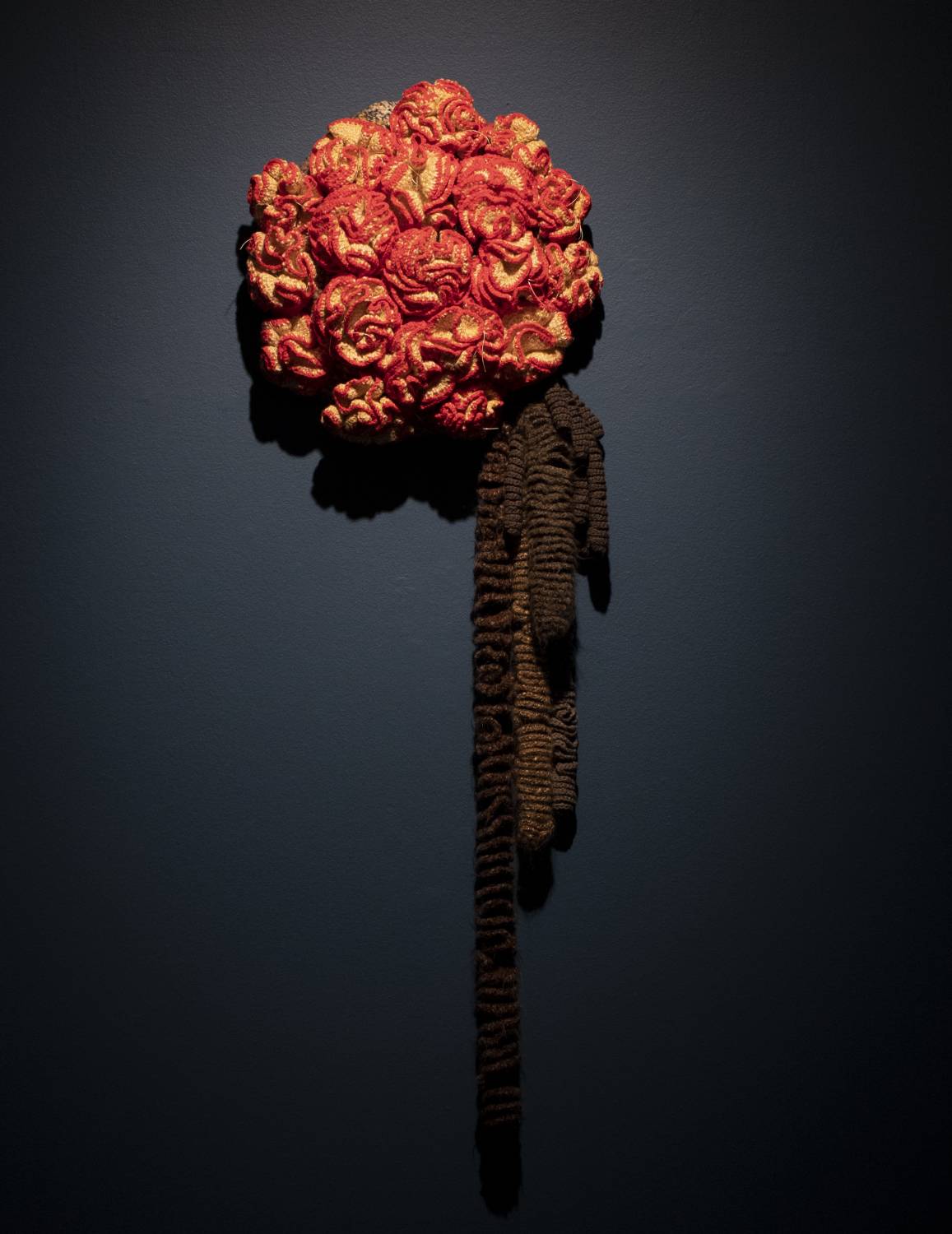

Mathematics Blackboard
The Mathematics Blackboard is a drawing created on-site, on an old-style school blackboard, that diagrams the mathematics of hyperbolic geometry underlying the forms of living and crocheted reef organisms. [Dimensions: W 16 feet x H 4 feet.]
Note: This piece is not part of the standard Traveling Exhibition and requires additional resources and budget. See here for more information on the work.

The Midden
This work is literally rubbish. The Midden is 4 years worth of Christine and Margaret Wertheim’s domestic plastic trash suspended in a fishing net from the ceiling. The sisters collected the trash in their home from the period January 2007 to April 2011. The work can be displayed in an “atom-bomb” configuration; or as a canopy of trash visitors walk under and explore from below with flashlights, as if they are divers “swimming” under the Great Pacific Garbage Patch. The Midden is a unique, personal, artistic meditation on oceanic plastic trash. Dimensions variable.
Note: This piece is not part of the standard Traveling Exhibition and requires additional resources and budget. See here for more about The Midden, and here on the role of plastic in the Crochet Reef project.
